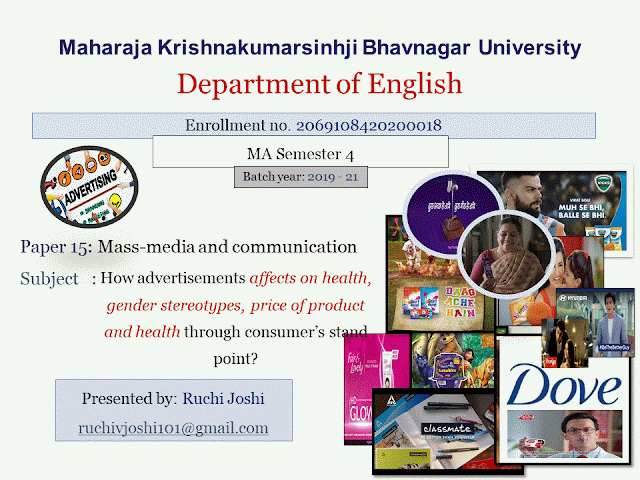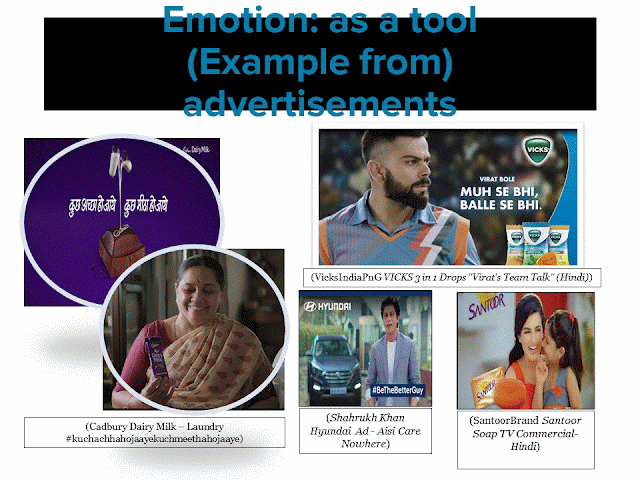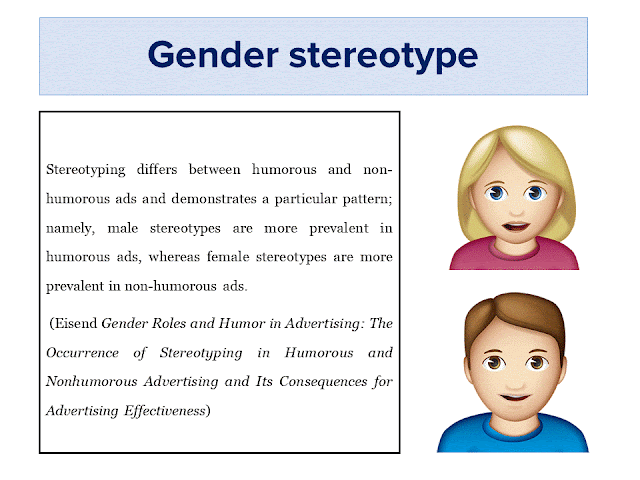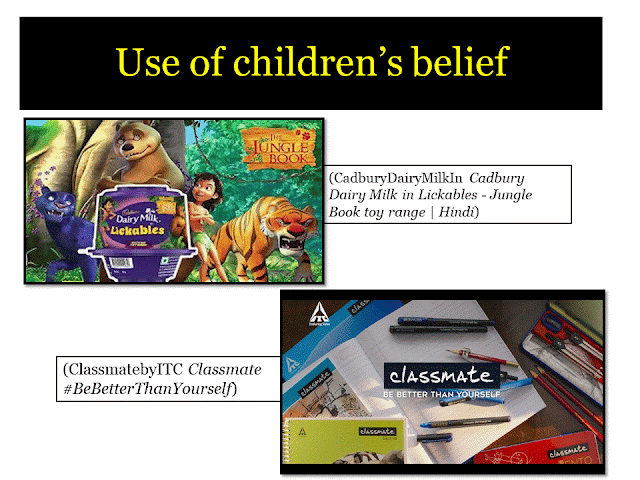Affects of Advertisements
Abstract: 2
Key words: 2
Introduction. 3
What is an
Advertisement?. 3
Functional Sense. 4
Theorist Laczniak. 5
Quest for the best approaches. 5
Hedonic dimension. 6
Emotions: as a tool 6
Examples. 7
Gender stereotypes. 7
According to key and Burnham, 8
Sex stereotypes. 8
Brand personality. 9
Advertising and its effect on
practice. 10
Advertising and its effect on
health industry! 10
Truth Effect 11
Use of children beliefs. 12
Video links to advertisements. 14
References to videos of advertisements. 15
Work cited (research writing) 16
There are a
lot of great technicians in advertising. And unfortunately, they talk the best
game. They know all the rules … but there’s one little rub. They forget that advertising
is persuasion, and persuasion is not a science, but an art. Advertising is the
art of persuasion.”
– William
Bernbach
How advertisements
affects on health, gender
stereotypes, price of product and health through
consumer’s stand point?
Nowadays, it is rare to find a
person who does not buy content in his daily life, driven by
advertisements. From tiny needles to fans hanging on our ceiling in the
house, we take everything from advertisements. Alas, not only the house
or personal things, but also the house itself, we are often drawn to take it or
make it like this which we might have seen in advertisement. Theories
can (and should) be borrowed from other fields and adapted to advertising. This
integration of fields makes the advertising more powerful and easy to adapt in
different realities and scenarios. However, theories must be contextualized and
practitioners should not be seduced by “strong-theory-only” thinking but friends, have you ever wondered why we are so
obsessed with things!? Are we really choosing something or are we being
pressured by strangers to choose something!? Have you ever thought like
that?
“Creative without strategy is called ‘art.’ Creative with strategy is
called ‘advertising.”
– Jef I. Richards
Researcher has analysed some of
advertisements thoroughly and tried to identify affects of advertisements
through the consumer’s stand point.
Advertisement, affects,
health, gender stereo types, price,
Advertisements play a major role in business. The business
world is competitive, and advertising is used to introduce a business, build a
brand and position a company, product or service against the competition.
Advertising delivers strategic messaging and elevates awareness within the
given market. Several advertising media are used to deliver the advertisement
to the market.
Advertising drives brand awareness and builds trust with
potential customers. Simply seeing your business name more often than you see
that of the competition will help in the long run. As an example, many fortunes
500 brand advertisements do not focus on their product. They buy so much
exposure that simply pushing their logo and name has a positive return.
Partnering with non-profits in advertisements is another method of increasing
awareness and positive associations. Even donating to local organizations that
show your brand on their media in return, is a form of positive brand
association and unintentional advertising.
“Advertising is the ability to sense,
interpret . . . to put the very heart throbs of a business into type, paper and
ink.”
– Leo Burnett
The major influence of advertisements on business is the
ability to influence buyer decisions and drive purchases. Advertisers introduce
their product or service in a credible and influential manner to educate their
potential customers. Unless a business has a high-traffic physical location,
advertising is required to simply let potential customers know they exist. In
addition, advertisements can educate about a product or service, make consumers
aware of pricing or challenge the competition by showing how their features are
more beneficial.
Advertisements are a guaranteed method of
reaching an audience. By creating an engaging ad, and spending enough to reach
many users, advertisements can have an immediate impact on business. This
effect could be seen in improved trade or boosted brand recognition, among many
different metrics. An advertisement (often shortened to advert or ad) is the
promotion of a product, brand or service to a viewership in order to attract
interest, engagement and sales.
Advertisements come in many forms, from copy to interactive video, and have
evolved to become a crucial feature of the app marketplace. An advertisement is
different from other types of marketing because it is paid for, and because the
creator of an advert has total control over the content and message.
‘Advertising is
the business of announcing that something is for sale or of trying to persuade
customers to buy a product or service.’
(Ivanovic A.
& Collin P H Dictionary of Marketing. London: Bloomsbury)
The
American Marketing Association also defines advertising as ‘the placement of
announcements and persuasive messages in time or space purchased in any of the
mass media by business firms, nonprofit organizations, government agencies, and
individuals who seek to inform and/ or persuade members of a particular target
market or audience about their products, services, organizations, or ideas’.
(http://www.marketingpower.com/_layouts/Dictionary.aspx?dLetter=A)
In
a functional sense, the key question is…
(1)
Does the product do what the consumer wants it to do?
(2)
Does it get clothes clean?
(3)
Does it quench your thirst?
(4)
Does it save you money?
Some
of these questions can be answered only through product research which audience
must have to do.
It affects many aspects of our
lives and can promote different behaviours that if misdirected can cause
harmful outcomes in the life of the affected beings.
The focus of advertisement becomes a delicate topic when channelling the
intentions of the seller into a may be unknown or much diversified market. Here
in this paper, researcher examines different ways advertising has been
affecting the contemporary era in Economy, Health and society such that
advertising is used and how advertisers are in their quest to find the best
approach to reach the final customer.
Three main aspect of
consideration determining the quality and type of advertising:-
- Product
- Need
- Customer
While
external factors, such as channer context, media etc are vital considerations
and often discussed, probably the most important matters of knowledge are to
know what to sell who tell to, and why to sell! From this stand point, the question,
‘How to sell it's is born from these three main parts of advertising.
As the digital world is improving
and developing more efficient and easier to use tools for advertisement. The
traditional advertising techniques and approaches must be improved too. Advertising
has not just from the result of changing consumer habits, decision making and
purchasing power, but it also appears to be part of the rise of a
transformative global society -
- Advertising should not be constrained
as a manageable informational resource for rational consumers
- Advertising can affect and
create positive effects in many fields.
Theories can and 'should be '
borrowed from field and adapting to advertising. This integration of fields
makes the advertising more powerful easy to adapt in different realities and
scenarios. Although a strong exchange between areas and fields.
Advertising works by breaking
through the clutter and noise of everyday life, disrupting the viewer’s
attention, and demanding their focus.
Advertisers
recognize the important role of emotion in persuasion, judgment, and decision
making.
(Taute et al. Emotional Information
Management and Responses to Emotional Appeals)
Two- dimensional
conceptualization of consumer attitudes
- The first dimension is a hedonic
dimension, resulting from sensation derived from the experience of using
products
- Second is, utilitarian
dimension, derived from functions performed by products
“Theories can
(and should) be borrowed from other fields and adapted to advertising. This
integration of fields makes the advertising more powerful and easy to adapt in
different realities and scenarios. However, theories must be contextualized and
practitioners should not be seduced by “strong-theory-only” thinking.”
(Laczniak
TheJournal of Advertisingand the Development of Advertising Theory: Reflections
and Directions for Future Research)
Advertising has the obligation of
making the customer to fell either the hedonic dimension or the utilitarian
dimension, or may be both of the same time. The hedonic dimension is the most
searched when creating advertising because persons want to feel better while
using a product. The most important thing brands need to measure in order to
know whether the advertising is effective or not is the positive response of
the targeted customer.
Marketers
believe that emotions are an important aspect of consumer behavior in a
persuasive context.
(Lewinski
et al. Predicting advertising effectiveness by facial expressions in response
to amusing persuasive stimuli.)
Advertisers recognize the important role of emotion in persuasion,
judgment, and decision making.
(Taute et al. Emotional Information Management and Responses to
Emotional Appeals)
Emotion is a type of tacit knowledge that
can be used as a tool for assisting in the sense-making processes
that lead us through this research. Advertisers or marketers uses
audience’s emotions as a tool. Advertisements of dairy milks, VICKS, Hyndai and
most famous Santoor soap and many more are selling consumer’s emotions as a
tool. Consumer’s emotions and attitudes are being sold and they are used for
better selling.
Eisend defines, Effectiveness reactions
triggered by humour do increase positive cognitions while humor directly
reduces negative ones. Stereotyping is
also included at the sometime of choosing the target of the advertising.
Stereotyping differs between humorous and non-humorous ads and demonstrates a
particular patterns.
Male stereotypes and are more
prevalent in humorous ad, whereas female stereotypes are more prevalent in non-
humorous ads. There are more differences not only between genders, but between
ages when they receive the stimulation of advertising.
Stereotyping
differs between humorous and non-humorous ads and demonstrates a particular
pattern; namely, male stereotypes are more prevalent in humorous ads, whereas
female stereotypes are more prevalent in non-humorous ads.
(Eisend Gender Roles and Humor in Advertising:
The Occurrence of Stereotyping in Humorous and Nonhumorous Advertising and Its
Consequences for Advertising Effectiveness)
Numerous gender stereotypes are
still present in TV ads, with females often portrayed in a more traditional way
than males when compared with their respective roles in society.
- Strong stereotypes in many ads’
stereotypes
- Products and their use-
Typically, women products tend to
be either body products or those associated with household tasks, food and
consumerism, while products associated with men are connected to socio-economic
projections such as cars, work, financial investment and sports.
(Kay and Furnham Age and sex stereotypes in British television
advertisements.)
Several numerous gender stereotypes are still present in TV ads, with
females often portrayed in a more traditional way than males when compared with
their respective roles in society. They also found that older female adults
(+55 years old) are more likely to be shown as consumers than both adult
females and older adult males.
Targeting
final consumers is as difficult as creating the proper advertising for them. If
the customer’s needs are targeted properly, the purchase decision is almost
inevitable. Advertising has to transmit clear messages to achieve specific
goals while still being Creative.
(Habib
Teaching Approaches in Advertising: Creativity and Technology)
For example, on one side we are
told by male defining of advertisements are told and beautified as DAAG ACHHE
HAIN whereas in DOVE soap advertisements are beautifying female face and to
remove all DAGS. Isn’t it describing double standard of stereotyping? Knowingly or unknowingly, it supports and
promotes by keeping alive bad heritages of stereotyping gender roles.
Female characters are mostly
placed in social integration situations, understanding roles or fulfilling
tasks connected with family a d family security. Women are more often shown
choosing products solving problems and dealing with fears, normally acting out
their role in all indoor environment. Rarely are males solving daily domestic
problems, except in humorous ads.
‘Advertising has to transmit
clear message to achieve specific goals while still being creative.’
(Habib-2015)
'The set of humans characteristic
associated with o brand.'
Many companies do not always
constrain advertising in accord with product pricing. They first set the
price according to the operations done to get the final product price has all
immediate effect on consumers whereas advertising has long-term carryover
effects. Thus, is seen as an operational investment. With this new trend of
combining both references price and advertising makes it easier for companies
to set a higher price depending on perceived value in the advertising
Two main elements affecting
market demand.
Reference price a d advertising has
all interaction relationship.
Whenever we talk about
advertisement how can we forget Fair and Lovely. With the passing of
years, slowly and steadily and they developed other several products and they
had increased prices.
With a good advertising campaign,
the company is in the position of setting a higher price as the sincerity and
competence of product show it is worth the extra money compared to the
competition. Advertising is matter of change and progress because people are
always looking for better products to satisfy more complex needs
Zyban Lemari defines, Health is one of the top sellers on
advertising. Health is on the list of the most wanted products in the world;
good health is needed by everyone. People usually see health as a complicated
issue that when explained simply within advertising, they feel misled by
untruthful promotion. This is because health-inducing products are often very
expensive and typically ignores prevention. Repetition is necessary for health
inducing products is often very expensive and typically ignores preventions.
Customers are more likely to
believe in the message if they see it repetitively.
Truth Effect also plays an
important role when it comes to health issue.
The illusory truth
effect and it is also known as the illusion of truth
effect, validity effect, truth effect, or the reiteration effect
which is the tendency to believe false information to be correct after repeated
exposure. This phenomenon was first identified in a 1977 study at Villanova University and Temple University. When truth is
assessed, people rely on whether the information is in line with their
understanding or if it feels familiar. The first condition is logical, as
people compare new information with what they already know to be true.
Repetition makes statements easier to process relative to new, unrepeated
statements, leading people to believe that the repeated conclusion is more
truthful. The illusory truth effect has also been linked to hindsight bias,
in which the recollection of confidence is skewed after the truth has been
received.
In a 2015 study, researchers
discovered that familiarity can overpower rationality and
that repetitively hearing that a certain fact is wrong can affect the hearer's
beliefs. Researchers attributed the illusory truth effect's impact on
participants who knew the correct answer to begin with, but were persuaded to
believe otherwise through the repetition of a falsehood, to "processing fluency".
Although the truth effect is
relevant to all persuasion contexts, health advertising in particular consists
of situations in which the subjective feelings of the consumer play in a
pivotal role
Again, the repetition of
information is needed when trying to hold that information inside the minds of
targeted people, when health becomes a brand trying to sell a product or
service, customers start to relate the brand with health, in spite of
competition entering a market, when customer recognizes a particular brand as
theirs, and possibly their one - and - only way to gain health, the brand wins
customer loyalty.
This reason is among those that
explain why the health industry is one of the biggest markets globally. Advertising
also promotes positive attitudes such as eating healthy. The constant stimuli
by the exposure of healthy images of fruits and vegetables creates a habit of
consumption of these health products and increases the own person.
(Bolanos & Eisner)
In other words, depending on the
approach the adviser chooses; the consumer can be affected in a way that not
only will; change his or her purchase decision but will also change the way of
living of the persons.
The potential impact of
advertising of unhealthy food on children's healthy eating choices has been
topic of concern among scholars any policymakers.
(Ferguson, conteras&
kilburn)
Even though children are
considered a well-defined market. There are many cultural differences in their
way of living and processing information- There are cultural differences in
food preferences as well, which do not appear to be clearly explained by TV
viewing.
Advertising
has a strong impact on children’s beliefs and perceptions, both
embedded/placement ads and distinct ads, which start at increasingly early
Ages.
(Belova,
Chang-Rundgren, & Eilks Advertising and science education: a
multi-perspective review of the literature)
And again, this picture is what
the type of advertising and the targeted consumers have to be chosen carefully.
In some cases, direct advertisements of fast foods have been banned and the
effectiveness of such approaches has not always been clear.
Conclusion
Thus, Advertising can reach out
every single part of our lives; from selling hair product to have cleaning
products. The way advertisers manage their ideas and design the advertisements
to reach people out is the most difficult part of the process. Advertisers have
the heavy duty of making everyone happy which is not all absolute but all end
to constantly attempt to achieve.
Researcher proclaims that…
the study of advertising should
be deeper enough to get to understand all of the processes of the mind. There
is always a market for a product, the hard part is to find the market and how
to approach it.
So, main focus of advertising
must be on the development of the products, which includes not only the
analysis of the customers but also to create speculation on new possible trends
and possible customers decisions.
∙(CadburyDairyMilkIn Cadbury
Dairy Milk in Lickables - Jungle Book toy range | Hindi)https://www.youtube.com/watch?v=BDnI6UEYnwc
∙ClassmatebyITC Classmate
#BeBetterThanYourself)https://www.youtube.com/watch?v=M8k1U3vk5RE
∙(Clinic Plus Tum Strong Ho)https://www.youtube.com/watch?v=b4OCIMX-lPo
∙(Dairy milk (Shanta bai –
Diwali gift)https://www.youtube.com/watch?v=1ZOX80x90oI
∙(doveindia Dove |
#StopTheBeautyTest (with English subtitles))https://www.youtube.com/watch?v=jEpTa2cMl_I
∙(Fair and lovely, glow and
lovely)https://www.youtube.com/watch?v=rIZ0rlNr7sQ
∙(Life boy (message to public
to protect against corona)https://www.youtube.com/watch?v=uY5SZLTD4XM
∙(mitthuaish Prestige Festive
Dhamaka Jo Biwi Se Kare Pyaar, Woh Prestige Se Kaise Kare Inkaar)https://www.youtube.com/watch?v=h0D-NATBYy8
∙(SantoorBrand Santoor Soap TV
Commercial- Hindi)https://www.youtube.com/watch?v=a1lWGPmInak
∙(Shahrukh
Khan Hundai
Ad- Aisi
Care Nowhere)https://www.youtube.com/watch?v=jDNrnYNaNk8
∙(Surf Excel: Daag Achhe Hain)https://www.youtube.com/watch?v=VWQOkK1a-34
∙((VicksIndiaPnG VICKS 3 in 1
Drops "Virat's Team Talk" (Hindi))https://www.youtube.com/watch?v=hzCxSXfzgYQ
•“Clinic Plus Tum Strong
Ho.” YouTube, YouTube, 7 Feb. 2020, www.youtube.com/watch?v=b4OCIMX-lPo.
•CadburyDairyMilkIn, director.
Cadbury Dairy Milk in Lickables - Jungle Book Toy Range | Hindi. YouTube,
YouTube, 7 Aug. 2020, www.youtube.com/watch?v=BDnI6UEYnwc.
•ClassmatebyITC, director.
Classmate #BeBetterThanYourself. YouTube, YouTube, 25 Mar. 2018,
www.youtube.com/watch?v=M8k1U3vk5RE.
•ComfortFreshZone, director.
Comfort After Wash - A Small Step Can Make a Big Difference! YouTube, YouTube,
1 Sept. 2017, www.youtube.com/watch?v=W61p4JQ8o08.
•Doveindia, director. Dove |
#StopTheBeautyTest (with English Subtitles). YouTube, YouTube, 24 Feb. 2021,
www.youtube.com/watch?v=jEpTa2cMl_I.
•MeriMAGGI, director. New MAGGI
Rajkumari Ad 2015 | Khushiyon Ki Recipe | #MomsMAGGI. YouTube, YouTube, 6 Feb.
2015, www.youtube.com/watch?v=Oqu0B2bA2sk.
•Mitthuaish, director. Prestige
Festive Dhamaka Jo Biwi Se Kare Pyaar, Woh Prestige Se Kaise Kare Inkaar.
YouTube, YouTube, 23 Sept. 2014, www.youtube.com/watch?v=h0D-NATBYy8.
•SantoorBrand, director.
Santoor Soap TV Commercial- Hindi. YouTube, YouTube, 1 Apr. 2014,
www.youtube.com/watch?v=a1lWGPmInak.
•“Shahrukh Khan Hyundai Ad -
Aisi Care Nowhere.” YouTube, YouTube, 21 Apr. 2021,
www.youtube.com/watch?v=jDNrnYNaNk8.
•“Surf Excel: Daag Achhe Hain.”
YouTube, YouTube, 2 Dec. 2017, www.youtube.com/watch?v=VWQOkK1a-34.
•VicksIndiaPnG, director. VICKS
3 in 1 Drops "Virat's Team Talk" (Hindi). YouTube, YouTube, 8 July
2019, www.youtube.com/watch?v=hzCxSXfzgYQ.
•Belova, Nadja, et al.
“Advertising and Science Education: a Multi-Perspective Review of the
Literature.” Studies in Science Education, vol. 51, no. 2, 2015, pp. 169–200.,
doi:10.1080/03057267.2015.1049444.
•Bolanos, and Elsner. “Positive
Effects of Self-Affirmation and Environmental Behavioral Reinforcers on Fruits
and Vegetable Consumption.” European Journal of Business and Social Sciences,
4(8), 2015.
•Eisend, Martin, et al. “Gender
Roles and Humor in Advertising: The Occurrence of Stereotyping in Humorous and
Nonhumorous Advertising and Its Consequences for Advertising Effectiveness.”
Journal of Advertising, vol. 43, no. 3, 2014, pp. 256–273., doi:10.1080/00913367.2013.857621.
•Ferguson, Christopher J., et
al. “Advertising and Fictional Media Effects on Healthy Eating Choices in Early
and Later Childhood.” Psychology of Popular Media Culture, vol. 3, no. 3, 2014,
pp. 164–173., doi:10.1037/ppm0000016.
•Habib, Sabrina. “Teaching
Approaches in Advertising: Creativity and Technology.” Journal of Advertising
Education, vol. 19, no. 1, 2015, pp. 17–25., doi:10.1177/109804821501900104.
•Ivanovic, A, and P H.
Collin. Dictionary of Marketing. London: Bloomsbury, 2003. Print.
•Kay, Alice, and Adrian
Furnham. “Age and Sex Stereotypes in British Television Advertisements.”
Psychology of Popular Media Culture, vol. 2, no. 3, 2013, pp. 171–186.,
doi:10.1037/a0033083.
•Laczniak, Russell N.
“TheJournal of Advertisingand the Development of Advertising Theory:
Reflections and Directions for Future Research.” Journal of Advertising, vol.
44, no. 4, 2015, pp. 429–433., doi:10.1080/00913367.2015.1060909.
• Lewinski, Peter, et al.
“Predicting Advertising Effectiveness by Facial Expressions in Response to
Amusing Persuasive Stimuli.” Journal of Neuroscience, Psychology, and
Economics, vol. 7, no. 1, 2014, pp. 1–14., doi:10.1037/npe0000012.
• Taute, Harry A., et al.
“Emotional Information Management and Responses to Emotional Appeals.” Journal
of Advertising, vol. 40, no. 3, 2011, pp. 31–44.,
doi:10.2753/joa0091-3367400303.









